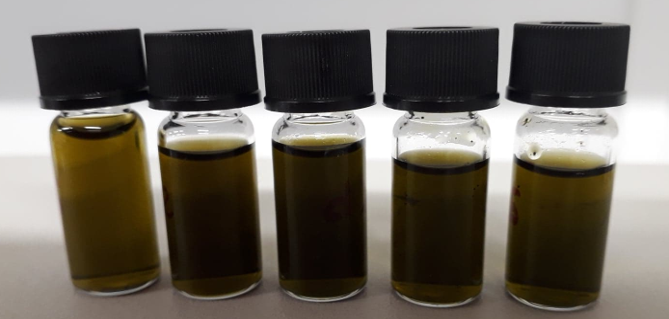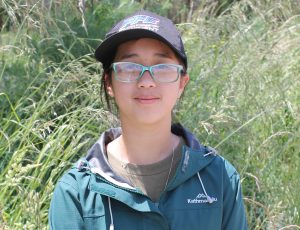Phone: 03 577 2395
C/- Marlborough Research Centre Trust, PO Box 875, Blenheim 7201


In this issue:

|
New demonstration trials were established at eight sites in 2018, in Northland, Waikato, Bay of Plenty, Taranaki, Hawkes Bay, Horizons and Marlborough. These eight new trials add to the existing network of NZDFI demonstration trials, which are designed to test and demonstrate NZDFI’s preferred species across an ever-increasing range of environmental conditions. Species included in the new trials are:
All seedlings planted were from known origins; in addition, 900 clonal cuttings of E. bosistoana produced by Proseed NZ were established within three of the new trials to test their initial survival and growth.
The sites were all planted by early October 2018, but a cold week in mid-October resulted in frosts which reduced seedling survival at three sites.
Site visits and assessment in October 2019, one year after planting, confirmed that within most trials there are blocks of trees of each species and seedlot that have at least 75% or better survival. However, the vulnerability of some species, most notably E. cladocalyx, to frost in the critical first growing season was also confirmed.
Once the trees in the new trials have grown to sufficient size, we will set up permanent sample plots (PSPs) in some of these blocks to provide ongoing species productivity data.
Thanks are due to all landowners - both those hosting our latest series of trials, and those with older trials on their properties.
Daniel Boczniewicz is a fourth generation forester from Poland, whose PhD studies focus on modelling stem properties of durable eucalypts. This summer he plans to complete the felling and analysis of the heartwood and sapwood of at least 100 E. globoidea trees from mature and semi mature stands in several regions.
The second part of 2019 was productive and busy period for my research. I made my first taper and volume attempts in R software and created a basic equation for E. globoidea based on the data collected in first part of 2019. During the summer I visited Marlborough where I worked on four NZDFI study sites. I collected data from 23 trees and I have almost reached the data collection goal for my first research objective. I also researched environmental effects on E. globoidea heartwood formation. I tested coring techniques and collected some trial cores for further study.
For me, being researcher means conducting studies and presenting results to the world. Therefore, I decided to share my research progress and get feedback from independent sources. I attended three conferences: the ANZIF Conference in Christchurch, Southern Mensurationists Conference in Asheville (USA) and The International Society for Ecological Modelling Global Conference in Salzburg (Austria). At the Salzburg conference I won the 1st price for the Modeller's Choice Poster Award.
I would like to thank my supervisors and the New Zealand Institute of Forestry Foundation for awarding me a Future Forest Scholarship, which made attending these conferences possible.
Watch a video made by Daniel about his work
Ebenezer Iyiola is from Nigeria and has a Master’s degree in wood technology. Ebenezer’s PhD research is on E. globoidea wood properties including the genetic correlation between key traits, and optimising the sampling intensity of breeding trials. Sampling is one of the most resource intensive aspects of research into wood properties.
Over the past six months I have completed an analysis of heartwood properties (diameter and extractive content) of an 8-year old E. globoidea breeding trial. Both heartwood quantity and quality were variable and under genetic control, creating the possibility of genetic improvement. However, there was a negative genetic correlation between the heartwood diameter and extractive content, implying compromises are required.
In addition, I assessed collapse in samples from the 8-year old E. globoidea breeding trial. Collapse is a common drying defect in low density eucalypts. I found collapse was present but also under genetic control, potentially adding a further wood quality trait to the breeding programme of this species. I also analysed wood properties (diameter, growth strain, volumetric shrinkage, air-dry density, dynamic modulus of elasticity and acoustic velocity) of coppiced E. globoidea, which showed higher levels of growth strain compared to young seedlings.
Finally, assessments of acoustic velocity in the E. globoidea breeding trial material are ongoing and will be analysed soon.
Chamira Rajapaksha is from Sri Lanka, where she is a lecturer in the Department of Pharmaceuticals, University of Kelaniya. Chamira received a Sri Lankan scholarship to carry out her PhD at the University of Canterbury. She comes to the NZDFI with knowledge of natural compounds and the analytical techniques of extraction and identification of these compounds. Chamira’s work will contribute to assessing the potential for essential oils as a by-product of a durable hardwood industry. A second important aspect is to look for relationships between the oil content of leaves and levels of insect pest damage.
I am continuing to research annual variation in essential oil content and composition in young and old E. bosistoana leaves with leaf sampling from the Harewood plantation each month.
My results to date show the highest oil yield and percentage of 1,8-cineole (the most important compound) have been obtained from leaves collected during the early summer months. As I have yet to complete a full year of leaf sampling, it is too early to say exactly how much higher the oil and 1,8 cineole contents are in the summer leaves than at other times of year.

Some of the essential oils extracted from E. bosistoana leaves.
| E. bosistoana summer results | Total essential oil µl/g during the summer | 1,8-cineole composition % |
| Mature leaves | 10.2 - 32.8 | 57 - 92 |
| Young leaves | 8.5 - 33.2 | 39 - 78 |
Other compounds identified from extracted E. bosistoana oils were D-Limonene, Terpeneol, Phellandrene, P-Cymene, α-Pinene, Trans-Aromadendrene and β- Myrcene.
A key part of my research involves developing a sampling strategy to assess the NZDFI E. bosistoana breeding populations, which will involve pooling leaves in the field. Over the next six months I will be collecting leaves, pooling in the field, and quantifying the essential oil content and composition.
--------------------------------------------------------------------------------------------------------------------------------------------------------
Seoljong Kim is from South Korea. Seoljong’s PhD is a genomic and taxonomic study of Eucalyptus species. One of his key research areas is to describe the differences between two closely related species, E. argophloia and E. bosistoana. Seoljong is collaborating with an international initiative to develop an improved version of a high‐throughput SNP (Single Nucleotide Polymorphism) genotyping system for eucalypts. This describes the genetic make-up of trees in great detail, and can be used to inform future genomic selection in breeding programmes.
For the past six months, I have worked on leaf sampling, herbarium preservation, and interpretation of SNP-chip genomic data of Eucalyptus bosistoana and E. argophloia.
First I collected around 150 leave samples of E. bosistoana trees from the Martin trial in Canterbury and JNL Ngaumu trial in the Wairarapa for DNA extraction and subsequent genotyping of the samples.
Also, a herbarium specimen of the morphologically deviating E. bosistoana tree including flowers and leaves was preserved for the taxonomic comparison of the species.
Finally, I received preliminary genomic data of 12 samples of each E. bosistoana and E. argophloia, generated from the SNP-chip, and I am now analysing this data.
Leslie Mann from Switzerland is in the initial stages of research into eucalyptus defoliation by Paropsine beetles including Paropsis Charybdis and Paropsisterna variicollis (Eucalypt Variegated Beetle, EVB). One of her research areas will be in the use of UAVs (drones) to monitor and assess pest defoliation, as well as looking into the heritability and site effects of pest tolerance. She has just completed her first summer of fieldwork.
The aim of my research is to assess Eucalyptus susceptibility to paropsine beetles (Paropsis charybdis and Paropsisterna variicollis) and see which of the NZDFI species are more resistant or tolerant to insect damage. To achieve this, I will carry out a broad measurement of paropsine defoliation occurring among the 11 different species chosen for the NZDFI project. I will do more research on species known to be promising in terms of tolerance to insects, for example E. bositoana and E. tricarpa. Here I will be looking for variation in resistance to insects within families and provenances.
A second research objective will be to find an efficient way to assess insect defoliation. Using drones and aerial imagery programs could allow rapid detection of outbreaks, as well as assessing big trees and difficult-to-access areas. This research will assist both the NZDFI breeding project and wider Integrated Pest Management programmes.
Over my first fieldwork season (December 2019 - January 2020) I was able to assess defoliation levels at different sites. In December, I assessed over 1,000 E. bosistoana trees from the 2012 breeding trial (86 families) and the 2018 clonal trial (73 families) at the Dillon site in Marlborough. In January, I assessed approximately 300 trees from 11 different demonstration species at the Dillon and Lissaman sites to gain an overview of the paropsine’s Eucalyptus preferences, and 120 trees from the 2017 E.tricarpa families at the Dillon and Lissaman sites.
Daniel Boczniewicz was recently awarded the NZ Institute of Forestry’s Future Forests scholarship at the 2019 NZIF conference in Christchurch. The award enabled Daniel to travel to two international conferences (see Updates from NZDFI Post-Grads above).
And Honours student Lisa Nguyen’s thesis on the wood properties of Eucalyptus tricarpa won the School of Forestry’s prize for the best 2019 Honours thesis.

Honours graduate Lisa Nyugen.
Lisa found E. tricarpa to be a species with high stiffness but a positive correlation between stiffness and growth strain, meaning any breeding programme to reduce growth strain would result in a trade-off in stiffness. The species also was found to have relatively low growth rate. Lisa assessed the heritabilties of key traits and made recommendations for future E. tricarpa breeding programmes.
Work at Proseed is proceeding on several projects, and we hope for confirmation of the Te Uru Rakau One Billion Trees grant so we can launch into upscaling our propagation work.
High ranking clones captured from the Woodville growth strain trial will be bulked up and planted into an E. argophloia archive at Amberley this coming autumn.
Planting of the E. bosistoana orchard at Amberley will be completed in autumn 2020 with new selections grafted from the NZDFI's Cravens Road breeding trial site last summer.
A series of E. bosistoana and E. globoidea sowings for grafting rootstock will be ready for grafting of possible new selections and to bulk up clones already collected that are poorly represented. There should be enough stock to plant an E. globoidea orchard next spring.

Pheromone trap in E bosistoana orchard.
Last summer the first E. bosistoana seed crop was extensively damaged by eucalypt leaf roller. This summer trees are being closely monitored and precautions taken. The orchard is being sprayed with a bacteria which is toxic to insect larvae (Bacillus thuringiensis kurstaki or BTK) and effectiveness of pheromone traps is being evaluated. When flowering finishes, pollinating bee colonies will be removed and more aggressive treatments applied: neem derivatives that disrupt pupal moulting and, if necessary, conventional insecticides.
Selected top E. bosistoana at Cravens Road were felled in October for log assessments. Cuttings will be collected from coppice growth and set.
At the end of last summer, from a short list of 50 E. bosistoana clones, 10 were selected on a balance of growth and ease of propagation for bulking up and commercial distribution. Stools were grown on as potted stock but, due to late timing and persistent rabbit browsing, only a few cuttings were set. Setting has resumed this summer.
Seventy-five clones from 18 of the top families in the Woodville stiffness trials have also been captured for bulking and commercial distribution. Rooted cuttings are being managed as stools and new cuttings are being set.
NZDFI is aiming to have 100,000 rooted cuttings from selected eucalypt clones available for planting by July 2021. Last season Proseed staff looked at various nursery systems that might be applied to producing larger quantities of planting material and this season we will establish and evaluate a pilot system for stool management and cutting production.
Between 2009 and 2012 a total of 192 open-pollinated families of E.bosistoana were established in breeding population progeny trials. These were planted across a range of abiotic (cold, drought, soils) and biotic (pests, diseases) site factors. This allows analysis of the stability of superior genotypes under contrasting environmental conditions and determines the degree of genetic control for important growth and wood quality traits.
All sites are planted in a single tree plot alpha-lattice incomplete randomised block design. Tree spacing is 1.8m x 2.4m, 2315 stems per hectare. In 2014 the first series of growth assessments, thinning and wood sampling commenced in the fastest growing sites.
A further series of trials with the same E.bosistoana families was planted in 2015 and 2016 under a Sustainable Farming Fund project. The primary objectives of these trials were: (i) to screen at a young age for growth strain, (ii) determine the heritability of this trait, and (iii) initiate a clonal testing programme from coppice cuttings.
Seedlings were planted at an irrigated nursery site at Woodville in blocks of 8 trees, replicated between 2 and 8 times, depending on the number of available seedlings per family, and the families were randomly allocated within the replication. At age 1-2 years old the trees were measured for growth then harvested and the stems assessed for growth strain using a splitting test developed by the University of Canterbury. Stiffness, twist, density, shrinkage, and acoustic velocity was also recorded. A selection index from the breeding values of these traits was used to identify the individuals in the Woodville trial for propagation. The cut stumps were allowed to coppice and provided the material for cuttings to be raised. A clonal test was planted in 2018 at two locations in Marlborough with cuttings propagated from this seedling coppice by Proseed NZ at a propagation facility located at their Amberley seed orchard.
Testing and deployment of genotypes can be undertaken with seedlings, clones or a combination of both. The production of planting stock by vegetative propagation (clones) of outstanding individual genotypes identified in progeny tests maximises the selection gains. In this first attempt at producing E.bosistoana cuttings for clonal plantings, the coppice from young seedlings was used. The time-frame between seedling progeny testing and clonal deployment could be shortened if selections in progeny trials could be felled and the coppice harvested for cutting production.
E.bosistoana is reported to coppice readily and this has been observed after thinning operations in the progeny trials. To test the potential to harvest coppice from older trees for clonal propagation, 33 trees were felled in the breeding population trial at Cravens Rd in October 2019. These trees are 10 years old and have a stump diameter average of 200 mm (see photo of coppice regrowth in the previous section). The area around each stump was sprayed to maintain it clear of weeds to promote coppice regrowth. Cuttings will be set from this material by Proseed in 2020 to progress the production of clonal tree stocks.
As the time approaches when our first generation of improved planting stock becomes commercially available, we are developing information resources for landowners keen to plant durable eucalypts.
We have added new information to the NZDFI website on:
(i) four proposed growing regimes, including a comparative economic analysis
(ii) NZDFI’s main species, with detailed information for growers on the three species selected for breeding work:
The species information includes a selection of photos to help growers identify our top NZDFI species.
We welcome any feedback or suggestions for more information.
------------------------------------------------------------------------------------------------------------------------------------------------------------------------------------------------------------------------
The NZDFI team achieved a lot last year under the Specialty Wood Products (SWP) programme and we want to thank all our landowners and supporters for your continuing assistance and enthusiasm for our long-term vision.
We have significant plans to continue the excellent progress we are making through the support of the MBIE/Forest Growers Research SWP programme over the coming three years. We have also had positive feedback from Te Uru Rakau on our 1BT application focusing on propagation and await the ‘green light’ for our project, so things are looking positive for 2020 and beyond..
The only downside to the start of 2020 has been the wildfires in Australia, the impact these are having on people, property, and the natural forests and their flora and fauna. I last toured through many areas of South East Australia in 2016 which have now been burned in the fires. All the forests I visited showed signs of having burned previously (as recently as 2003) and of having recovered.
However, these fires are much larger than anything previously known - at least in European recorded history - so recovery may be slower and more difficult given the complete loss of the forest ecosystem over such extensive areas.
Our sympathies are with all those affected by the fires. I also think there are lessons for New Zealand forest growers and farm foresters in having regard to the location of their plantings,access for fire fighting, and being prepared to protect ourselves and our property.
We wish you all the best for 2020.
Want to receive future Project Updates?
If you do not already receive our regular Project Updates, you can sign up here.
For more information about any of the work of the NZDFI, contact: info@nzdfi.org.nz
C/- Marlborough Research Centre Trust, PO Box 875, Blenheim 7201